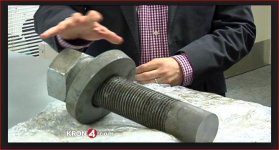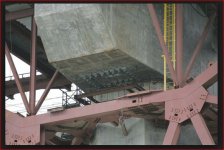JHOLLAND1
Titanium
- Joined
- Oct 8, 2005
- Location
- western washington state
the new Oakland San Francisco Bay bridge has additional complicating
wrinkle--failure of about one third of seismic anchor bolts--ranging in length
from 9 to 24 feet--each 3 inches in diameter and all embedded in concrete
News Distribution Network - Shared Video
jh
wrinkle--failure of about one third of seismic anchor bolts--ranging in length
from 9 to 24 feet--each 3 inches in diameter and all embedded in concrete
News Distribution Network - Shared Video
jh






